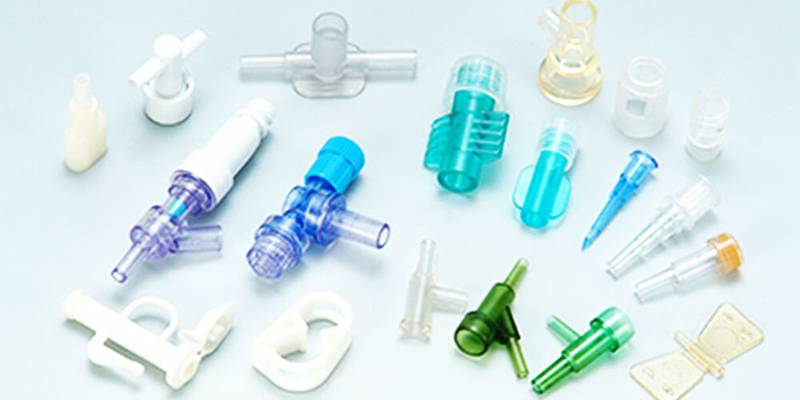- November 25, 2022
Today, the application of engineering plastics has revolutionized manufacturing industries mainly due to their enhanced capabilities and characteristics compared to other plastic grades. More specifically, medical plastics are now used in fabricating diverse shapes and sizes of functional medical plastic parts in the healthcare industry.
Hence, this guide examines all you need to know about medical plastics as we go through the types, properties, benefits, and applications.
What is Medical Plastics?
Medical plastics refer to plastic grades designed or tailored to produce different types of medical plastic products in the healthcare industry. These plastic polymers have become essential components in the modern health system.
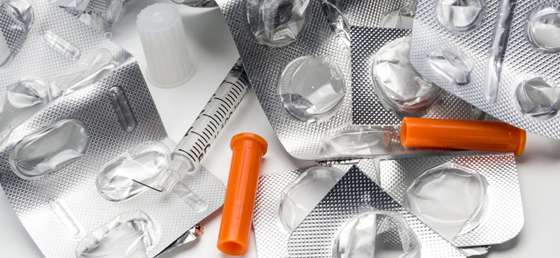
To a large extent, medical plastics vary in properties and characteristics. Due to stringent regulatory requirements for medical parts, health engineers use medical plastic polymers for specific health applications, from surgical instruments to medical supplies.
In most cases, medical plastics used for medical prototypes and parts are designed to deliver suitable resistance to impact, wear, temperature, and corrosion. That way, the plastic components can maintain high performance after subjecting the parts to recurrent sterilization cycles or other body or medical fluid that contacts the parts during use.
Increasing Market Demand for Medical Plastic Products
The medical plastics market has advanced, with the global market value projected to hit 37.2 billion USD by 2027; breathtaking, right? The increasing use of these medical plastics continues to transform the health market, with plastic medical products replacing medical instruments originally fabricated with ceramics, steel, or glass where applicable. This is because they are more cost-effective, durable, lightweight, and compatible with various manufacturing processes.
Further, the biocompatibility of plastics for medical devices with the human circulation system and their ease of disposal has proven a breakthrough in the healthcare industry. And this is mainly because the medical polymers help limit the spread of infections linked with non-disposable medical products. You’ll find that many suppliers of quality medical plastics reap the benefits of steady patronage from the various health industries worldwide due to their utmost importance.
Common Types of Medical Plastics
There are diverse types of medical plastic polymers, and every plastic grade comprises distinct characteristics that inform they are respective for specific medical devices. Here are some of the commonest medical plastics for medical devices and their properties.
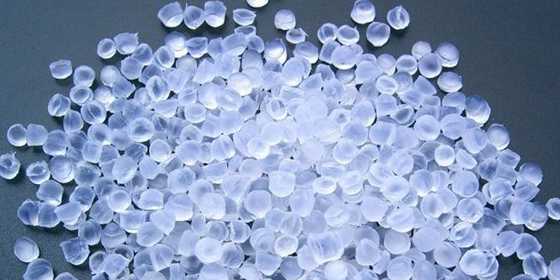
1. Polycarbonates(PC)
As the name suggests, polycarbonates (PC) comprise carbonate groups in their chemical structure. These thermoplastic polymers are highly praised and applied for their high impact and thermal resistance. They also provide good toughness, UV protection, durability, and electrical and optical properties.
Aside from this, polycarbonate sheets are pliable or workable into various shapes at room temperature without cracking. Due to their high heat resistance, they do not deform when exposed to high temperatures or steam. As such, experts often apply polycarbonate sheets for medical panels and signage.
2. Polypropylene(PP)
This medical plastic grade is often applied for many applications where resistance to high temperatures remains vital. This is because polypropylene-produced medical plastic parts can undergo extreme steam sterilization and maintain decent durability after processing. Moreover, it is recyclable and more cost-effective than other medical plastic polymers.
Polypropylene’s easy moldability into various shapes as well the stability to acids, bases, and other solvents, also contributes to its uniqueness and justifies its widespread use. Hence, most manufacturers use this plastic grade to produce non-absorbable sutures, plastic containers, clear bags, prescription bottles, disposable syringes, connectors, and finger-joint prostheses.
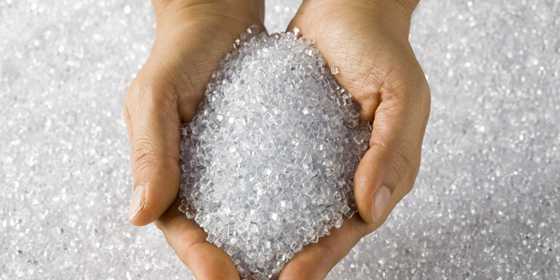
3. Polyethylene(PE)
This thermoplastic material is durable, tough, cost-effective, and suitable for various plastic processing methods. Its high resistance to impact and chemical and low moisture absorption properties makes it an ideal choice for manufacturing medical devices. Additionally, it is biologically inert and does not retain harmful organisms.
Polyethylene is often used in the medical field for fabricating medical implants because it is biocompatible and does not decompose in the body over time. Similarly, healthcare professionals can also subject these parts to various sterilization techniques and highly concentrated cleaning agents.
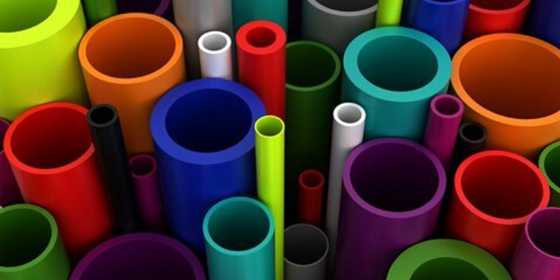
4. Polyvinylchloride(PVC)
This plastic grade is also called PVC plastic. PVC is available in diverse forms, but thermoplastic grades with high thermal stability, corrosion resistance, and flame retarding features remain the most used plastic polymer in the medical industry.
More so, this plastic material is usually molded to fabricate rigid or flexible medical parts depending on the amount of plasticizer added to produce the required hardness. Manufacturers often apply PVC to make catheters, feeding tubes, and infusion bags for nutrients and dialysis fluids.
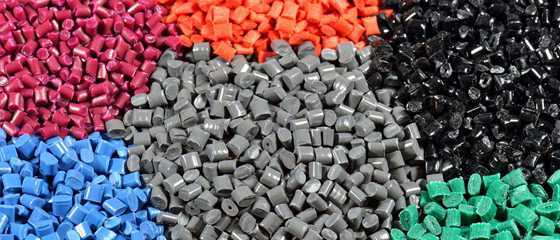
5. Acrylonitrile Butadiene Styrene(ABS)
This plastic grade, also known as ABS plastic for short, is a thermoplastic copolymer that serves as an exceptional substitute for metal parts of medical devices. ABS plastic is rigid, durable, and provides an appealing aesthetic quality that is perfect for the medical field due to its easy coloration. Aside from this, it can undergo various molding processes to form different medical plastic parts.
Further, ABS can withstand medical sterilization techniques like gamma radiation or chemical sterilant such as ethylene oxide (EO). Hence, ABS plastic sheets are ideal for manufacturing non-absorbable sutures, tendon prostheses, tracheal tubes, and other drug-delivery systems.
6. Polystyrene(PS)
This plastic material is also used for a wide range of medical applications due to its ease of sterilization. Its optical properties make it suitable for manufacturing parts such as test tubes, diagnostic tools, Petri dishes, casing for test kits, tissue culture trays, and other medical devices.
7. Polyethylene Terephthalate Glycol (PETG)
PETG is a transparent, durable, machinable, and thermoplastic polymer widely used for medical applications. Typically, it is ideal for medical use because it can withstand sterilization procedures, including radiation and liquid chemicals, without fading.
PETG is also applied for manufacturing food containers. Thus, it is usually the ideal choice of plastic container in the food preparation zone of hospitals and clinics, but you may also find PETG sterilization trays in some hospitals.
8. Polymethyl Methacrylate(PMMA)
It is also called acrylic. This plastic material comprises specific properties similar to glass. As such, the medical grade plastic can reflect and transmit beams of light, and this inherent characteristic makes it an excellent choice for fabricating endoscopic implants.
Essential Properties of Medical Plastic Polymers
There are diverse types of medical plastics, and each plastic grade’s utilization is often limited to specific applications due to inherent characteristics and design factors. The essential properties of medical plastic polymers are biocompatibility and sterilizable properties.
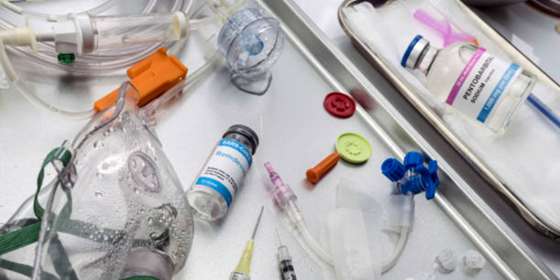
Biocompatibility
This property describes the compatibility of medical plastic polymers with the body tissues without adverse effects. Aside from this, these materials must not release toxins or produce immunological or allergic reactions on exposure to body fluids. As such, they do not interact with the body system due to their chemical and biological inertness.
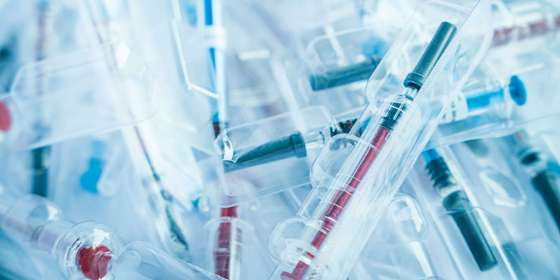
Sterilization
The property describes the ability of medical plastic materials to undergo sterilization processes. For example, the medical plastic part produced must resist potential damages when exposed to sterilization methods such as gamma and UV radiations, autoclave steam, dry heat sterilizers, and liquid chemicals.
Below are some other essential properties of medical plastic polymers:
- Good Mechanical Properties (abrasion resistance, impact strength)
- Thermal Stability
- Good Optical Properties or Clarity
- Non-permeability
- Chemical Resistance
- Good Flame Retardation
- Low Water Absorption
Benefits of Medical Plastic Parts in Healthcare
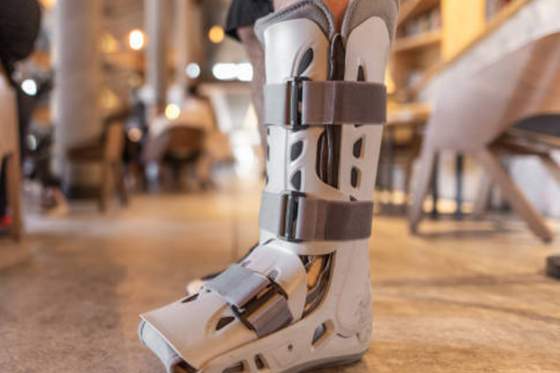
Medical plastic parts offer several advantages to the healthcare industry. Take a look at them below:
1. Easier Sterilization
Disposing of these single-use tools after surgical procedures helps control and limit the spread of life-threatening infections. For example, reusing a catheter is not considered safe due to the high chance of retaining some gram-negative bacteria like E.coli.
Even so, there are other reusable medical plastic parts with surfaces that can accommodate infective organisms, and such components require rapid and consistent sterilization to ensure their safe use. The innovation of heat-resistant and biocompatible plastics grades has helped ease the sterilization of medical plastic products to repel and eliminate these organisms.
2. Versatility
Medical plastic polymers are used for a wide range of healthcare applications. From the onset, health engineers used medical plastics to manufacture disposable medical plastic products such as IV tubes and inhalation masks. But then, the use of medical grade plastic has recently applied to far more products.
Medical plastics are now often used to produce other vital materials ranging from pill casings, implants, and catheters to joint replacements or prostheses for body parts. Today, virtually all you will see in a modern hospital setting contains plastics in one form or the other.
3. Increased Safety Features
Medical plastics offer an excellent solution for transporting or transferring biohazardous materials since they are non-permeable and durable. As a result, the safe removal of these medical wastes help prevents exposing the environment to hazardous organisms. Furthermore, medical plastics are also used to manufacture tamper-proof caps for pharmaceutical containers, thus ensuring the optimal safety of the patients.
4. Improved Quality of Life
Medical plastic parts have helped improve the quality of life of many patients. For instance, amputees now find life more enjoyable and comfortable thanks to the invention of prostheses with medical plastics. Today, manufacturers fabricate lightweight and durable prosthetics with suitable plastic grades through injection molding, thus improving their mobility, independence, and ability to engage in daily activities.
Above all, several medical plastic polymers are hypoallergenic. Therefore, a patient with a medical history of allergies to traditional materials such as latex becomes less prone to an allergic reaction during treatment.
5. Environmental Friendliness
Many medical grade plastics are recyclable, making them environmentally friendly. For this reason, most healthcare professionals find it easier to use plastic materials for medical applications. At the same time, they also remain accountable to the environment due to their ease of disposal and good re-processing features.
Different Applications of Plastic in the Medical Products
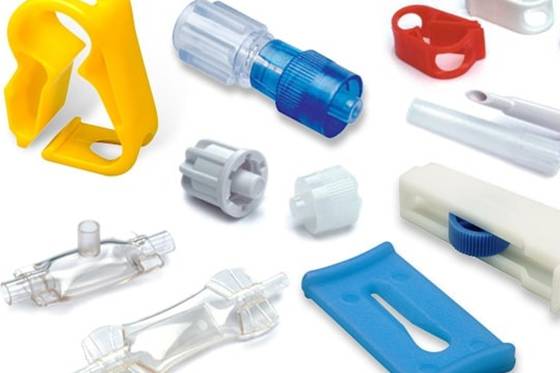
Medical plastic polymers undergo various plastic fabrication and screening procedures before they get applied in the healthcare manufacturing industry to produce multiple medical devices and instruments that meet the standard requirements. Below are some of the common medical plastic products:
- Surgical instruments (catheters, cannulas, gauges, etc.)
- Sutures
- Dental instruments (suction tips, dam clamps, cotton roll holders, etc.)
- Infusion Bags
- Disposables (syringes)
- Sterilization trays
- Medical implants
- Anesthetic and imaging equipment
- Tubing
- Prosthetics
- Orthodontics
Get Medical Grade Plastic Parts at WayKen
Medical plastics are progressively employed in several healthcare industries owing to their crucial benefits and applications. However, before producing medical plastic parts, manufacturers must consider the aptness of each medical polymer where applicable. Regardless, high-quality plastic machining of medical supplies is essential.
At Wayken, we provide top-notch plastic machining and other plastic products manufacturing services to produce all your medical grade plastic parts. We take pride in our experienced professionals committed to fabricating all kinds of industrial plastic parts. Also, keep in mind that we assure high-quality medical parts to meet your needs. Just upload your CAD files and you will get a quote and DfM feedback!
Conclusion
Medical plastics have become a staple in health care as they are crucial for one-time use. It prevents the spread of harmful organisms, diseases, and biomedical waste. Consequently, these high-performance plastic grades remain of interest in various areas of the medical field to fabricate medical plastic parts that offer specific functional properties and benefits.
FAQs
What medical grade plastics are biocompatible?
The typical medical plastics grades are used for biocompatible applications. It includes medical polymers of polyethylene, polycarbonate, polysulfide, polypropylene, polyurethane, and polyether ether ketone. Manufacturers subject these plastic materials to stringent standard tests before they are considered appropriate for manufacturing medical devices.
How is medical plastic made?
The plastic materials employed as medical plastics are usually obtained by engineering suitable resins with processes that provide the required qualities. The most compatible manufacturing processes include blow molding, injection molding, and plastic extrusion. Often, the polymer produced has high abrasion resistance, tensile strength, and corrosion resistance.
What type of plastic is used in surgery?
The most common plastic materials used for manufacturing medical plastic products for surgical procedures include polycarbonate, polyethylene, polypropylene, or the formulation of custom grades to meet specific surgical applications.

